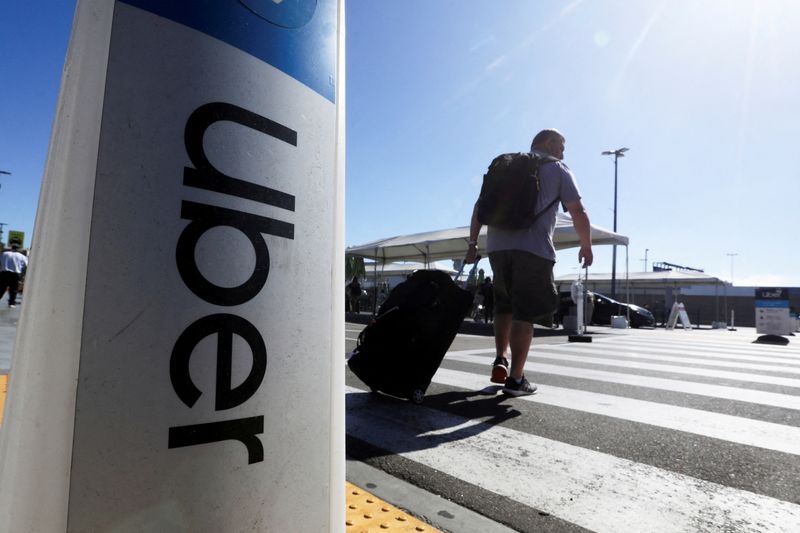5 big analyst AI moves: Apple lifted to Buy, AI chip bets reassessed
Investing.com -- Canaccord Genuity has downgraded Uber (NYSE:UBER) to “hold” from “buy,” and lowered its price target to $84 from $90, citing rising uncertainty from the accelerating rollout of autonomous vehicles.
The brokerage values Uber at ~18x its projected 2027 non-GAAP earnings of $4.64, a discount to peer averages due to growing disruption risks from AV entrants.
Ride-hailing services currently cost consumers about $3.40 per mile. In contrast, Tesla’s robotaxi offerings could undercut that sharply.
A Model Y-based robotaxi is projected to cost riders $1.09 per mile, and Tesla’s upcoming Cybercab could bring that down to $0.97.
Mobileye Drive-powered robotaxis, using a more sensor-intensive approach, are estimated at $1.70 per mile.
Uber is responding with a hybrid strategy, combining traditional ride-hailing with autonomy partnerships. It has invested in Aurora, collaborated with Waymo, and explored autonomous delivery through Uber Eats.
CEO Dara Khosrowshahi has emphasized five conditions needed to scale AVs: regulatory acceptance, superior safety, cost efficiency, localized operations, and a high-utilization platform.
Uber is positioned to lead in the latter two, leveraging its demand aggregation and logistics infrastructure.
The long-term risk, however, stems from potential concentration among AV technology providers.
A scenario where Tesla (NASDAQ:TSLA) or Waymo dominate the ecosystem could reduce Uber to a subordinate role, unable to capture meaningful value from the autonomous value chain.
Canaccord highlights the importance of diversified AV suppliers, like Mobileye, that could power fleets from multiple automakers and preserve Uber’s relevance through operational integration.
Efficiency gains from AVs could also accelerate Uber’s disruption. Robotaxis are expected to perform about 24 trips per day, compared to eight for human-driven vehicles.
Just 411,000 robotaxis could theoretically replace the 1.2 million U.S. ride-hail drivers.
Tesla has already sold approximately 2.8 million Full Self-Driving (FSD)-capable vehicles in North America, with just 15% deployment sufficient to challenge Uber’s core market.
Under a hybrid model, Uber could still generate significant revenue. At a cost of $1.25 per robotaxi mile and 50% participation in that market, Uber’s opportunity would be about 15.9 billion miles, yielding $4 billion in revenue and $1.2 billion in gross profit.
But if robotaxi costs fall to $0.25 per mile and Uber retains a large share, revenue could reach $66.0 billion and gross profit nearly $20 billion.
While Uber has the global scale and diversified operations, such as Eats and Freight, to withstand near-term pressure, its long-term positioning depends on how the AV ecosystem consolidates. For now, Canaccord sees a balanced risk-reward and maintains a neutral stance.
